Bone and Joint Decade World Network Conference
Ho Chi Minh City, Vietnam
November 29 – 31, 2012
Day 1 29.12.12
The Bone and Joint Decade World Network Conference held in Ho Chi Minh City, Vietnam, was an insightful meeting which brought together speakers and delegates from around the World and from multiple professions.
The theme for this year’s conference was ‘Working Better Together’ with a focus on developing and implementing a multi-professional and multidisciplinary approach to the prevention and management of musculoskeletal conditions.
Day one of the conference saw a key note speech from Dr Ivy Oandasan, Associate Professor & Clinician Investigator Department of Family & Community Medicine, University of Toronto. Dr Oandasan began by defining inter-professional care as the provision of comprehensive health services to patients by multiple health caregivers who work collaboratively to deliver quality care within and across settings. Some of the key benefits of collaborative working were highlighted including how integrated and shared care plans can lead to quality outcomes alongside the importance of collaboration during education: “education and training should prepare health care providers to work in an environment which allows them to share expertise in a team environment.”

Dr Oandasan emphasized that the BJD can leverage existing inter-professional education and care initiatives to improve outcomes for those with musculoskeletal conditions by:
- empowering people to prioritize their own care,
- Improving access to cost-effective prevention and treatment,
- Increasing research into MS disorders
- Providing access to supportive information.
Dr Oandasan concluded her informative talk by stating that effectively working together in a multidisciplinary setting will enable us to collectively advocate for better healthcare which is imbedded into a system which we can all believe in.
To see Dr Ivy Oandasan’s presentation please click here.
The afternoon sessions on day one, spurred by Dr Oandasan’s messages, focused on the lessons to be learnt from sharing best practice. Speakers included those from varying professions such as orthopaedic surgery and Journal editorship.
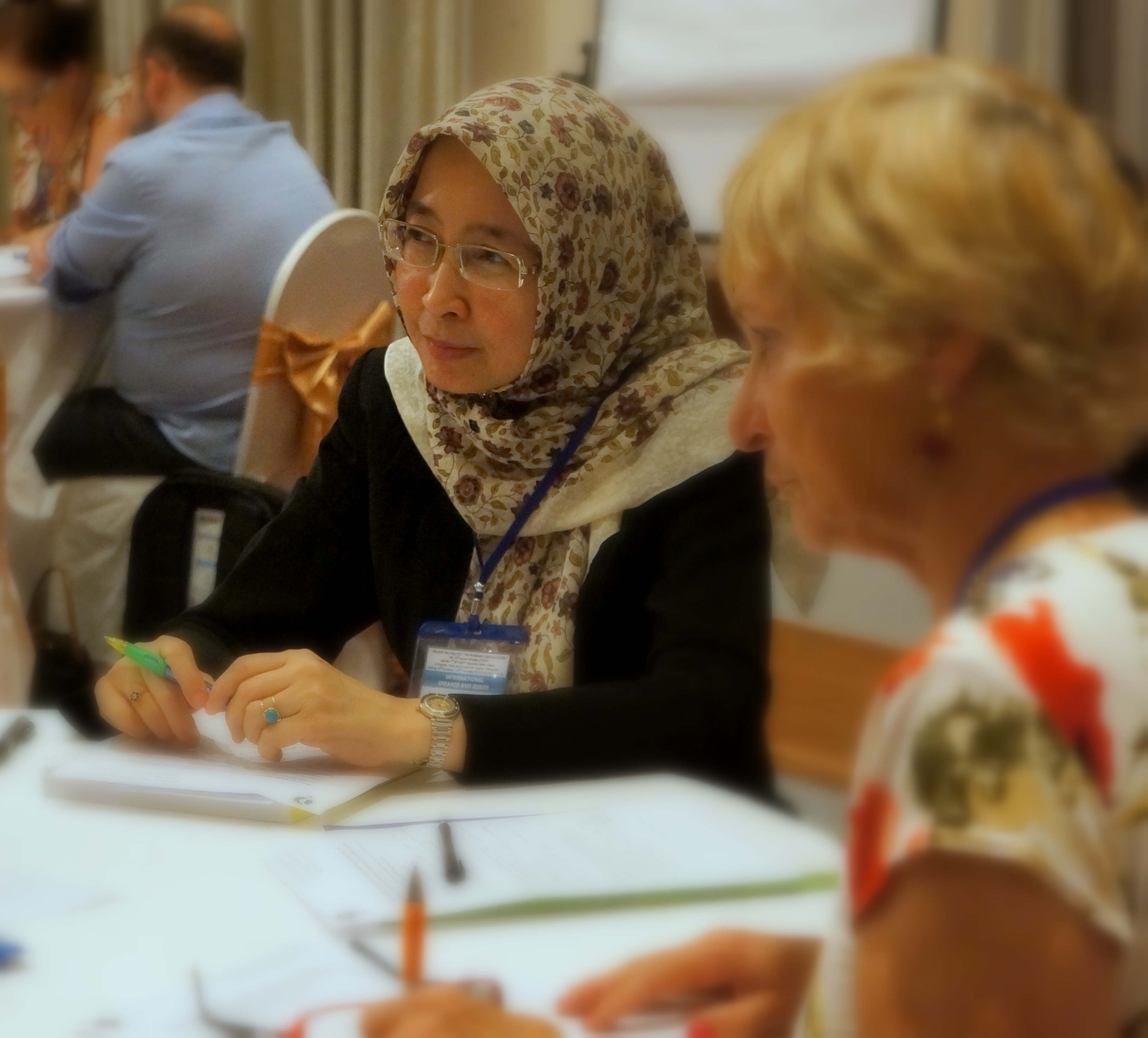 Interaction is an important part of the culture of the Bone and Joint Decade and the interactive contribution from delegates and speakers alike was an important ingredient in the success of the conference. With this in mind, the late afternoon session rounded up the day’s events by involving delegates in workshops to identify the key guiding principles of effective collaborative working. Delegates were divided into working groups which focused on six designated backgrounds: Advocacy, Clinical Care, Education and Training, Research, Dissemination and Organisations.
Interaction is an important part of the culture of the Bone and Joint Decade and the interactive contribution from delegates and speakers alike was an important ingredient in the success of the conference. With this in mind, the late afternoon session rounded up the day’s events by involving delegates in workshops to identify the key guiding principles of effective collaborative working. Delegates were divided into working groups which focused on six designated backgrounds: Advocacy, Clinical Care, Education and Training, Research, Dissemination and Organisations.
Groups were asked to answer the following questions individually:
- What are the benefits of working together?
- What are the main barriers to working together effectively?
- What could we do to break down these barriers?
After discussing the answers, groups decided the top two or three benefits and barriers to working better together, and how to break them down.
together, and how to break them down.
Group leaders where then asked to formulate and present the ‘Guiding principles for effective collaborative working’ for their designated topic during day 2 of the conference.
An overarching theme which emerged from the presentations was the importance of not only identifying the barriers of working together but also progressing towards implementing strategies to overcome them both in and between disciplines.
To view the full report from the workshops please click here.
Day 2: 30.12.12
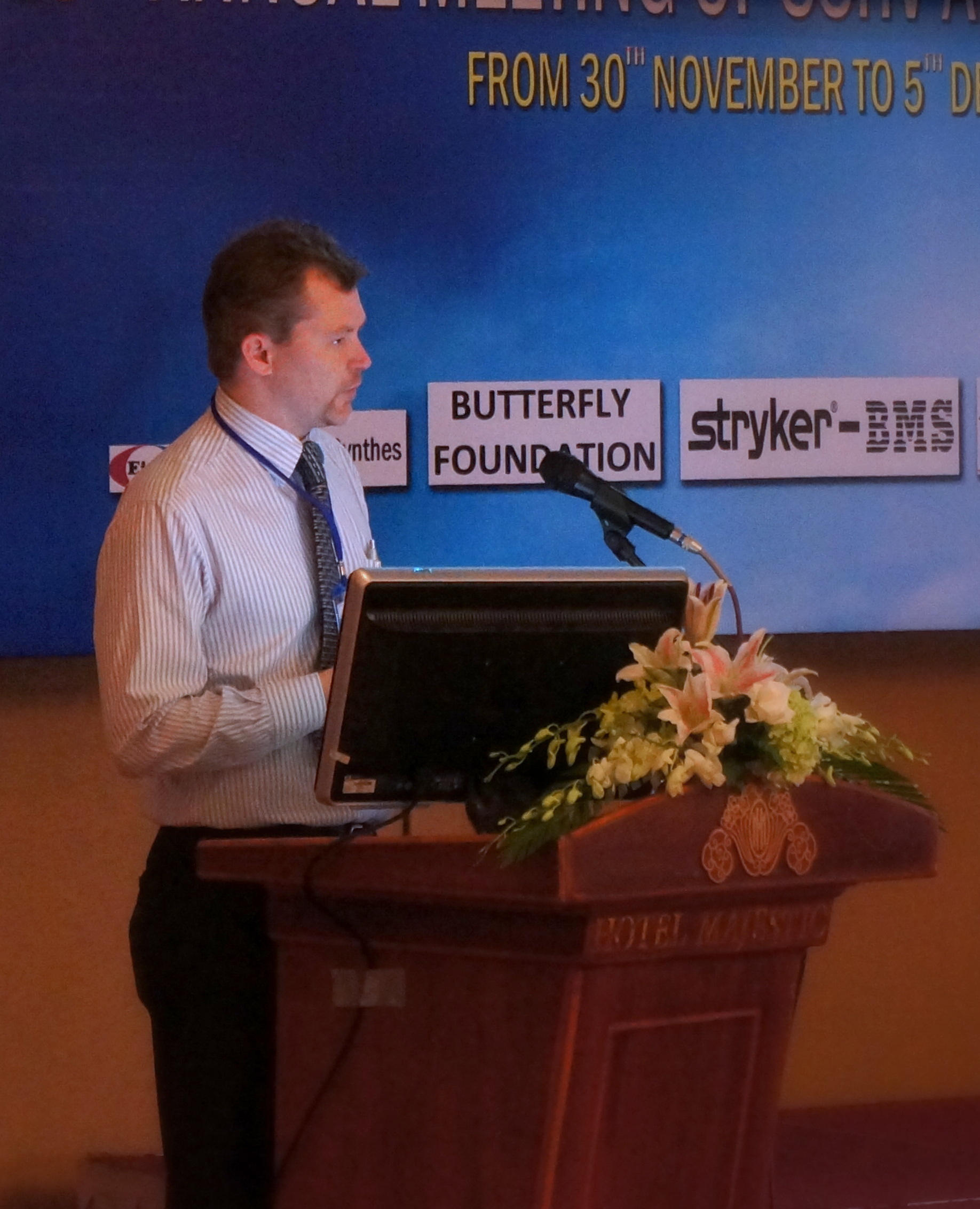
Day 2’s proceedings kicked off with a key note speech from Jonathon Passmore, Technical Officer, Road Safety and Injury Prevention, WHO Viet Nam. The talk focused on the issues, successes and challenges of road safety in Viet Nam. With over 35.8 million registered vehicles (95% motorcycles) road traffic trauma and its consequences are a major focus for the WHO in Vietnam.

The mortality rate of road rraffic trauma in 2011 was 12.5 deaths for every 100,000 people. With the help of provocative advertising campaigns and the enforcement of helmet legislation, rates of death and serious injury have decreased. However, problems still exist including low rates of children wearing helmets, incorrect helmet wearing and low quality helmets. Other major risk factors for road traffic trauma also cause problems in Vietnam such as alcohol consumption, speeding, mobile phone use, incorrect use of seat belts and child restraints, overloading and running red lights/counter-flow.
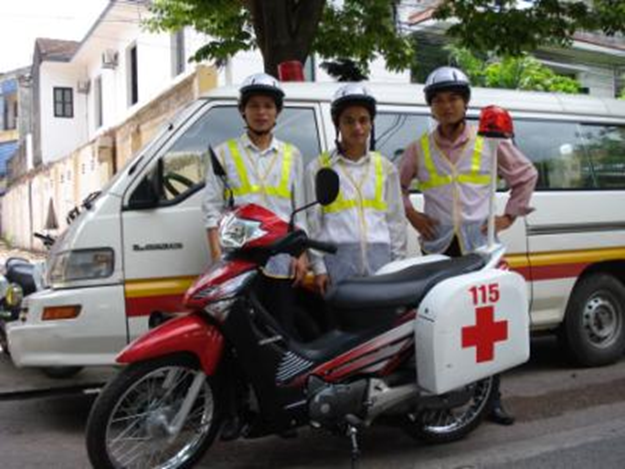 Mr Passmore continued to highlight how pre hospital Trauma care could help to combat some of the devastating effects of road traffic trauma. Currently, it is estimated that only 10% of road traffic injured patients receive some sort of pre hospital trauma care with 50% of these receiving inappropriate care. The WHO is currently working with the Ministry of Health to develop and implement a model for sustainable pre-hospital care. The objective of such work is to strengthen the capacity to provide first and second tier care by developing a standardized training program and equipping trained volunteers with first aid kits. They also aim to monitor the quality of care which is provided in order to identify gaps for improvement and collate information for policy makers.
Mr Passmore continued to highlight how pre hospital Trauma care could help to combat some of the devastating effects of road traffic trauma. Currently, it is estimated that only 10% of road traffic injured patients receive some sort of pre hospital trauma care with 50% of these receiving inappropriate care. The WHO is currently working with the Ministry of Health to develop and implement a model for sustainable pre-hospital care. The objective of such work is to strengthen the capacity to provide first and second tier care by developing a standardized training program and equipping trained volunteers with first aid kits. They also aim to monitor the quality of care which is provided in order to identify gaps for improvement and collate information for policy makers.
Improving access to cost-effective prevention and treatment continues to be a key goal for the Bone and Joint Decade in the aim to reduce the enormous impact that road traffic trauma has on individuals and societies, and on healthcare services and economies all over the globe.
We would like thank Jonathon Passmore and the WHO in Vietnam for their interesting and valued contribution to our conference.
If you would like to view Jonathon Passmore’s presentation please click here
If you would like to visit the WHO Vietnam website please click here
If you would like to view more materials on road traffic and injury prevention please click here.
Day 2 of the conference also saw presentations from key speakers from South East Asia which focused on activities and challenges in the ASEAN regions.
Among many great speeches Dr Miles T. Dela Rosa of the Philippine Orthopaedic Association addressed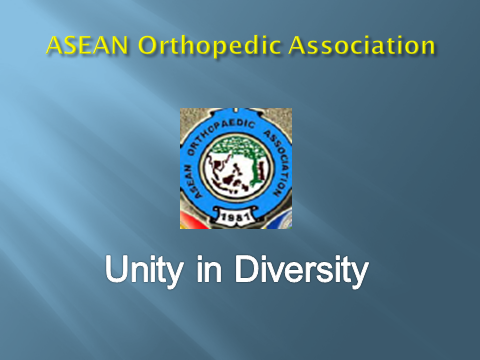 how the Philippine Council for the Bone and Joint Decade is meeting and translating the wider challenges and messages of the BJD. The organisation has been communicating the BJD concerns through the department of health, medical societies, the media, local government and lay/civic organisations. The talk recognised the importance of national organisations in delivering updates on prevention and treatment and that patient awareness is dependent upon the initiative of these organisations. Dr Dela Rosa concluded his talk by stating that multi-disciplinary collaboration is essential, and implementing agencies must be committed to working together to make roles and goals clear and effective.
how the Philippine Council for the Bone and Joint Decade is meeting and translating the wider challenges and messages of the BJD. The organisation has been communicating the BJD concerns through the department of health, medical societies, the media, local government and lay/civic organisations. The talk recognised the importance of national organisations in delivering updates on prevention and treatment and that patient awareness is dependent upon the initiative of these organisations. Dr Dela Rosa concluded his talk by stating that multi-disciplinary collaboration is essential, and implementing agencies must be committed to working together to make roles and goals clear and effective.
We would like to thank all speakers from the ASEAN regions for their valued contribution to this year’s conference. To see a full list of speakers and their presentations please click here.
The afternoon session also included a key speech from Professor Lyn March of the Australian Rheumatology Association on the recent results of the Global Burden of Disease (GBD) project.
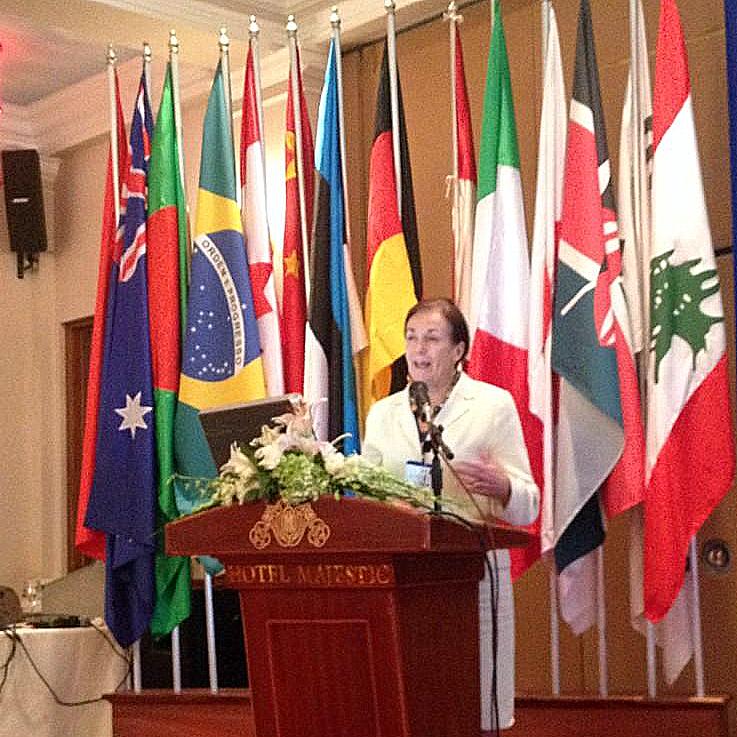
Prof. March began her talk by outlining the aims of the GBD project which are;
- To compare overall population health across communities over time
- Determine which conditions contribute most to health loss in any given population
- Identify health inequalities
- Help decision-makers to assess health priorities
- Allocate resources
- Identify gaps in data
The GBD project used disability adjusted life years (DALYs) to measure the burden of disease by ranking how much death and disability each disease or condition causes. In comparison to previous years, current results showed that musculoskeletal disorders are estimated to increase from 4.7% in 1990 to 6.8% (global DALYs) in 2010. Low back pain is estimated to be the leading cause of disability (YLDs) in the world and is the 6th highest contributor to the global burden of disease overall (DALYs). Meanwhile, Osteoarthritis of the knee and hip are the most rapidly rising major conditions in the last 20 years.
These results are a stark demonstration of the large and continuing shift in global disease burden away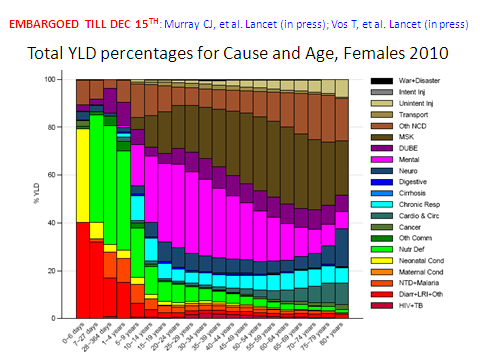 from communicable to non-communicable diseases and away from premature death to years lived with disability. This rising burden from non-communicable diseases which include musculoskeletal conditions will impose new challenges on health systems.
from communicable to non-communicable diseases and away from premature death to years lived with disability. This rising burden from non-communicable diseases which include musculoskeletal conditions will impose new challenges on health systems.
Prof. March concluded that although these results are a very positive step forward for raising the awareness of MSCs, better epidemiological data is needed to inform the next GBD study and strategies need to be identified to deal with the rising burden of conditions such as arthritis and spinal pain.
Since its launch in 2000, the Bone and Joint Decade has worked to gain recognition for the burden of musculoskeletal conditions throughout the world. We would very much like to thank Prof Lyn March and all those who worked hard in producing the data for the Global Burden of Disease Study; we will be using this crucial new evidence of the enormous and growing burden of musculoskeletal conditions to further underpin our campaign to make musculoskeletal conditions a public health priority.
To view Prof. March’s presentation please click here
To view the full GBD report and data please click here
To conclude two days of productive discussions a gala dinner was held at the Majestic Hotel, Ho Chi Minh City. During the dinner an award presentation celebrated the contribution made by the delegates to both the BJD WNC and also the SRA Lectures Course-SSHV18 and Operative Spine Course.
During the conference it has become clear that in order to effectively prevent and treat musculoskeletal conditions, multidisciplinary health care working and training is a key factor and must take place in all regions to ensure that the ever increasing burden of MSCs is reduced.
We would like to thank all those who attended and presented at the meeting. A special thanks to Professor Vo van Thanh, who hosted the conference, worked tirelessly towards its success and to facilitate the arrival and accommodation of all delegates and speakers.
The conference was held in partnership with SRS Lectures Course-SSHV 18 and Operative Spine Course – also organised by Professor Vo van Thanh. We are sure all participants will join in thanking the Professor for all his work.
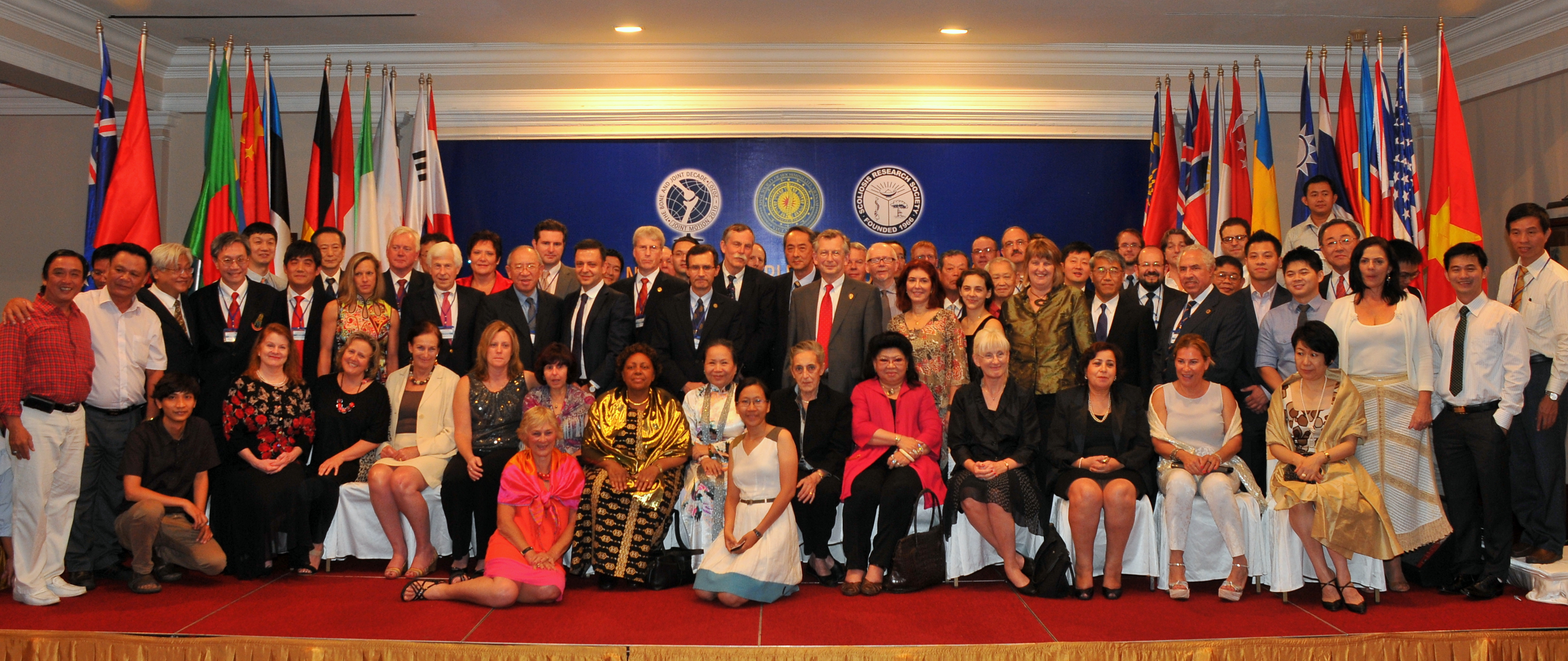
To view the conference agenda please click here
For a full list of all presentations from the conference please click here

